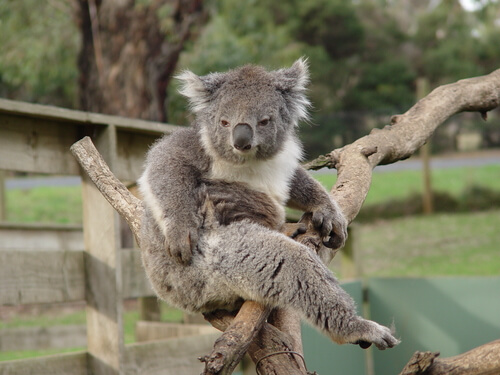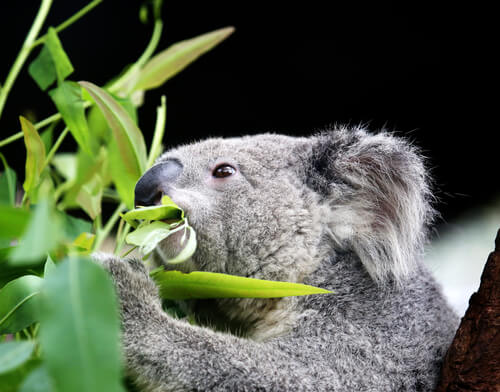All About Koala Behavior

Koalas are endearing animals because of their cuddly, furry and really cute appearance. Moreover, as they can only be seen in Australia, they grab our attention even more because we often want what we can never have. We invite you to learn more about koala behavior.
Koala behavior
Despite their endearing, sweet appearance, koalas are known to be somewhat aggressive. This occurs because they’re somewhat distrustful – they’re always on the watch out for predators.
However, when they’re tamed or trust the person they’re with, then they’re sweet and affectionate. Of course, no animal would let us pet them without checking us out first – even dogs want to smell us first before letting us pet them.
What’s true is that this somewhat aggressive tendency in specific situations is due to the fact that they aren’t very sociable animals and are rather territorial. In fact, they don’t even like to be with other members of their own species, unless it’s for mating. That’s why in their social structure they’re usually seen alone and, on rare occasions, in small groups in which there’ll only be one male and the rest will be females.

Their habitat is in the trees, so it’ll be unusual to see them on land except for one reason – to change trees. In this, they’re very similar to sloths, which only come down from the tree to do their “business” and then change trees. However, the koala’s reasons for this are very different, which we’ll tell you about later.
Their diet
The koala’s diet is almost entirely based on eucalyptus leaves, which is why it usually spends most of its time in this type of tree. This is a curious fact, as eucalyptus leaves contain toxins that are usually harmful to other herbivorous animals.
That is why the mother feeds her baby with feces. We say feces, but they actually come from a different part of the intestine. Having said that, it’s still food digested by the mother to eliminate toxins that could be harmful to the baby koala.
For about two months, the baby will feed on this substance which is known as pap. Only after that time will the baby koalas dare to try some leaves on their own without fear of becoming intoxicated.
Curiosities about koala behavior

There are many curiosities surrounding this funny animal. Here are some of them:
- Changing trees. As we said before, the koala changes trees for different reasons than the sloth. When winter comes, it usually lives most of its time in the leafiest trees, even if they’re not eucalyptus, in order to be protected from the cold by their leaves. But, when summer arrives, it chooses less leafy trees which it clings to lower down the tree in order to keep cool. So, it’s not unusual to find koalas in trees other than eucalyptus.
- They don’t eat from all eucalyptus trees. There are an estimated 600 species of eucalyptus trees in Australia, but koalas only feed on 50 of them. We don’t know why this is, but experts think that the taste or smell mustn’t be to their liking.
- They walk, run and swim! The latter isn’t something they do very often and many people don’t believe it, but there are videos and photos on the internet that confirm that it’s a fact. Check out YouTube and you’ll find some!
- They’re very sleepy. In fact, it’s said that they sleep about 22 hours a day and they get quite angry if you wake them up!
So, koalas are curious animals with some rather unusual behavior, but we can’t help falling in love with them! Who can resist those cute little faces! We certainly can’t! Check out another article that we’ve specially chosen for you all about koalas below!
All cited sources were thoroughly reviewed by our team to ensure their quality, reliability, currency, and validity. The bibliography of this article was considered reliable and of academic or scientific accuracy.
- Smith, M. (1980). Behaviour of the koala, Phascolarctos cinereus (Goldfuss), in captivity VI*. Aggression. Wildlife Research, 7(2), 177-190.